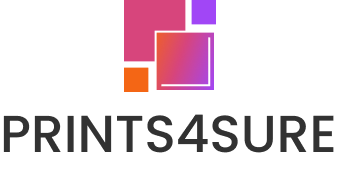In the realm of photography and display, the quest for capturing and presenting images in the most alluring and lifelike manner has led to the innovative use of shadow boxes with backlit photo prints. This technique, marrying the depth of shadow boxes with the vibrancy of backlighting, transforms two-dimensional photos into mesmerizing three-dimensional displays.
By carefully sculpting light and manipulating shadows, artists and photographers unlock a new dimension of visual storytelling.
This method not only breathes life into photographs by enhancing colors and details but also creates a dramatic effect that draws the viewer into the scene. Whether for galleries, home decor, or commercial spaces, the artful combination of shadow boxes and backlighting opens up a myriad of possibilities for creative expression and atmospheric design.
The Science of Light and Shadow in Photography
The dynamic interplay between light and shadow is pivotal in shaping the mood and perception of a photograph. Light, in its essence, is the paintbrush that photographers use to highlight emotions and details within a frame. It has the power to transform a mundane scene into a poignant moment, or a cheerful setting into one of melancholy. Shadows, on the other hand, are equally influential.
They add depth and dimension, turning flat, two-dimensional images into intricate portrayals of life. The clever manipulation of shadows instills a sense of realism, making the viewer feel as though they could step right into the scene. This balancing act between light and shadow is not just about illumination and darkness; it's about using contrast to evoke feelings, tell stories, and create atmospheres. The nuanced use of light and shadow can subtly influence a viewer’s perception, steering emotions and crafting the narrative that the photographer wishes to convey.
Designing with Shadow Boxes
Types of Shadow Boxes Suitable for Backlighting
When it comes to integrating shadow boxes with backlit photo prints, selecting the right type is crucial for achieving the desired visual impact.
- Standard Shadow Boxes: These are the most common type and offer a versatile range of depths, typically ranging from 1 to 4 inches. They work well for a variety of photo sizes and can accommodate LED strip lights or panel lights for backlighting.
- Deep Shadow Boxes: Featuring depths greater than 4 inches, deep shadow boxes are ideal for creating more pronounced shadows and a heightened sense of three-dimensionality. They are particularly effective for larger prints or when you want to incorporate physical objects alongside the photos.
- Custom Shadow Boxes: For unique or specific design requirements, custom shadow boxes can be crafted to any size and depth. This option allows for maximum creativity and personalization but generally comes at a higher cost.
Considerations for Choosing the Right Depth and Size
The choice of depth and size for a shadow box with a backlit photo print depends on several factors:
- Visual Depth: Deeper boxes provide a more dramatic shadow effect, which enhances the three-dimensional illusion. Consider the overall depth of the box in relation to the size of the photo and the desired shadow intensity.
- Size of the Display Area: The size of the shadow box should be proportionate to the display area. Larger spaces can accommodate bigger or multiple shadow boxes for a gallery effect, while smaller areas might benefit from a single, smaller piece to serve as a focal point.
- Lighting Type: The type of backlighting (LED strips, panel lights, etc.) will influence the required depth of the shadow box. Some lighting options may need more space behind the print to diffuse light evenly without creating hotspots.
- Subject of the Photo: The content of the photo itself can guide the choice of depth and size. Dynamic, detailed scenes might benefit from deeper boxes to amplify the depth effect, whereas simpler or more abstract images could be well-suited to shallower frames.
Innovations in Backlighting Techniques
The realm of backlighting has been revolutionized by the advent of LED (Light Emitting Diode) technology, known for its even light distribution and exceptional color accuracy. This advancement allows for meticulous control over light intensity, virtually eliminating hotspots for uniformly illuminated backlit prints. The precision of LED backlighting enhances the true colors and vibrancy of photographs, faithfully reproducing the intended mood and atmosphere.
Furthermore, the introduction of programmable RGB (Red, Green, Blue) LEDs adds a dynamic layer to displays, offering endless possibilities for color-changing effects. These LEDs can transition through colors, adapting the display's ambiance with the click of a button—perfect for tailoring the mood of spaces in real time. From transforming commercial venues to enriching art exhibits, RGB LED backlighting sets a new standard for engaging and flexible photographic presentations.
Practical Applications and Settings
Home Décor
Backlit shadow boxes transform personal photo collections into striking home décor elements. They shine a new light on cherished memories, creating vivid displays that catch the eye and add a layer of depth to any room. This innovative approach turns personal snapshots into stunning pieces of art, enriching living spaces with a warm, inviting ambiance.
Galleries and Exhibitions
In the realm of galleries and exhibitions, shadow boxes with backlighting dramatically showcase artwork, bringing out its depth and texture. The controlled lighting enhances the visual impact, inviting viewers into an immersive experience. This technique not only highlights the art but also weaves a narrative through the interplay of light and shadow, enriching the overall atmosphere.
Commercial Spaces
For commercial environments, backlit shadow boxes offer a dynamic means to craft memorable brand experiences. These displays, used in retail, showrooms, and corporate settings, spotlight products or brand elements in a compelling, three-dimensional way. The backlighting grabs attention, promotes engagement, and leaves a lasting impression, enhancing the space's aesthetic and reinforcing the brand identity.







